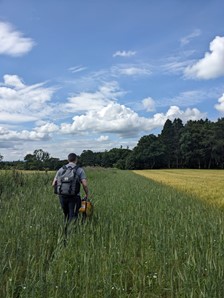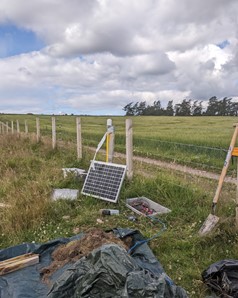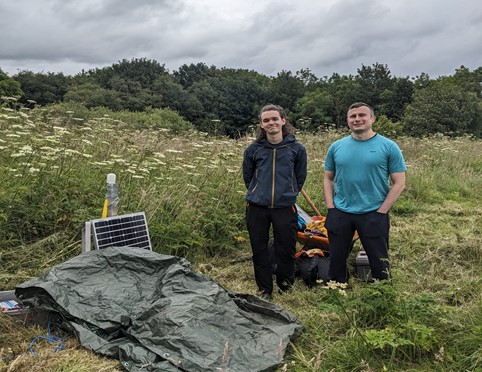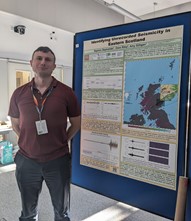Author: David Riley, BEng Mechanical Engineering, University of Aberdeen
Project: Are there any earthquakes in North East Scotland?
Supervisor: Amy Gilligan, School of Geosciences, University of Aberdeen
I’m a first-year mechanical and electrical engineering student with a broad interest in science. I wanted to spend this summer developing myself professionally and improving my understanding of machine learning, and so was intrigued when I saw a REP placement advertising the project “Are there any earthquakes in North East Scotland?”. I immediately applied.
The application process was fairly straightforward. The more I learned about the project the more interested I became so I was very happy when, a few days after the interview, I found out that I had been successful and would be spending the summer helping with geophysics research!
I met my supervisor Dr Amy Gilligan a few weeks before the placement was due to begin. She gave me an overview of the project plan, including that there was another REP student, Szymon, so we would be working as a team of 3 and that the research project was part of a larger multi-year project called PICTS (Probing Into the Crust Through eastern Scotland).
The aim of PICTS is to uncover the role that the Highland Boundary Fault has played in building Scotland using seismology. Last year a new network of seismometers had been deployed in the northeast, and now that it had been gathering data for a year it was our job to decommission the seismometers, collate the data and begin to investigate it.
The first couple of weeks on the project were spent doing initial data exploration and working in the field decommissioning seismometer stations. We were really lucky with the weather for the fieldwork, and this combined with the varied locations and compelling work made for a great start.
Once the fieldwork had been completed it was time to fully focus on processing the data and investigating it for (mainly seismic) events of interest. We were looking for signals from small and local earthquakes in amongst noisy data from more than 10 seismometers over a period of 12 months; fortunately a lot of this can be done efficiently with some Python code.
We used a variety of techniques to explore the data. The basis of most of our work was analysis using machine learning based models supplemented by other model types and analysis techniques. We had access to a powerful Linux computer to run our more intensive scripts on when needed, which was interesting for me because although I’m familiar with Linux this was the first time I’ve had access to a GPU for parallel computing, and this GPU was even a specialist one optimised for machine learning type calculations!
Whilst analysing the data we made a number of interesting findings which may prove useful to the PICTS project, including some signals that are possibly earthquakes which no one had previously known about. I had the opportunity to develop a Python package which automated many aspects of processing PICTS data and using it to train machine learning models; this allowed me to better understand aspects of Python packaging, machine learning model training, and the use of git and git hub which were all things that I particularly wanted to learn and which will be very transferable to my studies and future career.
As the placement came to an end Szymon and I wrote up our findings and produced a poster showing the interim PICTS results for the British Geophysical Association’s Post Graduate Research in Progress conference. I had the opportunity to attend the conference so was able to present the poster to interested parties as well as see many other posters and talks. It was fascinating to see all of the other research and to be able to ask questions to the other delegates. Attending the conference gave me some further ideas for PICTS, but I think I will have to put them in the handover documentation because the University semester is starting now!
Overall I really enjoyed the experience of doing a Research Experience Placement. I have learned and developed many transferable skills, including all of the ones that I set out to improve at the beginning of this summer, as well as improving my understanding of data science and scientific research in general. Working on PICTS was also hugely interesting, fun, and in general a great way to spend the summer. For anyone who’s seen a REP which captures their interest, I’d highly recommend that they apply for it!

























































